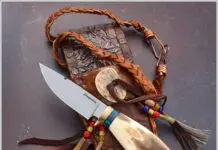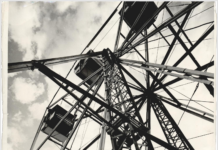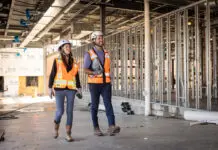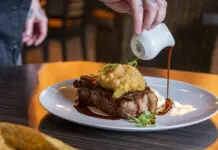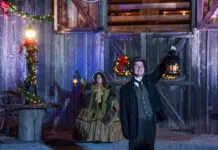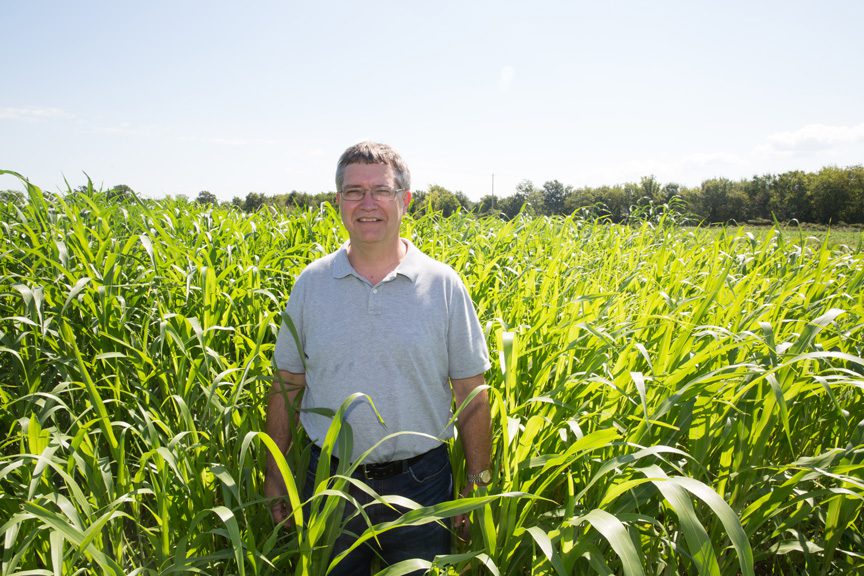 [dropcap]The[/dropcap] Kerr Center for Sustainable Agriculture has undergone many changes since its formation in 1965. But, President/CEO Jim Horne, who has been with the organization for 43 years, says public perception on the subject of sustainability has changed the most.
[dropcap]The[/dropcap] Kerr Center for Sustainable Agriculture has undergone many changes since its formation in 1965. But, President/CEO Jim Horne, who has been with the organization for 43 years, says public perception on the subject of sustainability has changed the most.
“The biggest change for us since we started out has been public perception and concern about issues of sustainability,” Horne says.
An Advocate For Farmers
The Kerr Center, a nonprofit charitable foundation, was established by Oklahoma Sen. Robert S. Kerr’s wife and their four children shortly after Kerr’s death. Sen. Kerr, from Ada, served as governor of the state from 1943 to 1947 and as a United States senator from 1949 to 1963. One year after the formation of the foundation in his honor, the Kerr Foundation’s Agriculture Division was established to continue Kerr’s work in conservation efforts.
 “In the beginning, we traveled in teams of specialists to help farmers solve problems and work on designs,” Horne says.
“In the beginning, we traveled in teams of specialists to help farmers solve problems and work on designs,” Horne says.
Horne himself grew up in western Oklahoma, the land of wheat, and came to the Kerr Center in 1972 as an agricultural economist.
“After meeting some of the people who were here at the time, I became really excited to join the team,” Horne says. “I wanted to become an advocate for farmers. I think my background gave me credibility with them, which helped significantly, and I’m also open-minded to what our consumers are interested in.”
One of the earliest successes of the center was fighting the brucellosis (an infectious disease found in cattle) on a statewide scale, and later on a national level.
“The [USDA] messed things up by telling people they had to solve the problem in only one way, so when that wasn’t working, they called us in, and we showed people what their options were,” Horne says. “We were hugely successful, and it’s something we’re still very proud of.”
Sustainability Challenges
Twenty years after its inception, the structure of the Kerr Center changed dramatically.
“In 1985, the Kerr Center was split into four separate organizations,” Horne says. “In the mid-‘80s, farmers were going bankrupt like crazy. We started looking for alternative solutions. What we ended up doing was a brave move.”
Kerr’s daughter, Kay, first sparked the discussion that led to the eventual change in focus for the center.
“The split towards sustainable agriculture started from a question that the senator’s daughter was asking. She’s very wise, and she asked me a single question that began to change things. … She asked me, ‘Do you see something wrong in agriculture?’ It was a very piercing question, and I had to think about it honestly,” Horne recalls. “I decided that our current approach wasn’t working, so I thought I’d figure out how to make it work – and that was sustainability.”
Horne’s line of reasoning, while viewed as innovative by some of his colleagues, did not make him a popular man for many others in his circle. Sustainability was widely misunderstood, Horne says, as simply maintaining the status quo and keeping things the same, as opposed to introducing new ideas.
“The decision to become focused on sustainability was not an easy choice to make at the time. Before the split, we had a strong conservation ethic at the Kerr Center, and we weren’t strong users of fertilizers and chemicals, but in the mid-‘80s, a move towards sustainability was viewed as an environmental movement and looked down on, especially since most of us in the agriculture industry were coming from conservative backgrounds,” Horne says. “I found that I was suddenly uninvited from some of the committees I used to sit on.”
Many of the difficulties stemmed from perceived differences between the various sides of the agriculture industry, Horne says.
“The industrial agriculture industry had one view, and [sustainability] was viewed as a threat to them,” he says. “Now, everyone is humane with each other. Part of my message is that what we do isn’t just about agriculture; it’s about our resources and our population and its social dimensions.”
 The wider influence of agriculture and the effect it has on the world continues to interest Horne. After more than 40 years with the Kerr Center, and being a major force in its transition to the Kerr Center for Sustainable Agriculture, Horne says this is the major reason why he has continued working in the field.
The wider influence of agriculture and the effect it has on the world continues to interest Horne. After more than 40 years with the Kerr Center, and being a major force in its transition to the Kerr Center for Sustainable Agriculture, Horne says this is the major reason why he has continued working in the field.
“That aspect – thinking about how sustainable agriculture can solve bigger societal issues like poverty – has both created and kept my passion for this work,” Horne says. “I’m glad I took this path.”
It also helps, of course, that public perception about sustainability efforts has shifted dramatically since the mid-‘80s. Today, Horne says there is still a lot of resistance in Oklahoma to sustainable practices, especially in limiting the use of chemicals and fertilizers on crops, but most people are more open-minded to the ideas the Kerr Center emphasizes.
“There is a growing movement emphasizing local food, and people are thinking about how you can meet needs now without jeopardizing your future needs. People are concerned now with the question of how the earth can sustain a growing number of people,” Horne says. “That didn’t used to be the case. We have things a lot easier now because people are open to these ideas.”
“These ideas,” as Horne says, of sustainability, are researched, explored and presented in a number of ways at the Kerr Center today. It functions both as an educational hub for sustainability practices, the only one of its kind in the state, and a working farm and ranch. With a staff of around 10, the center conducts educational workshops and demonstrations, researches and implements sustainable best practices and provides outreach to groups all over Oklahoma and beyond.



